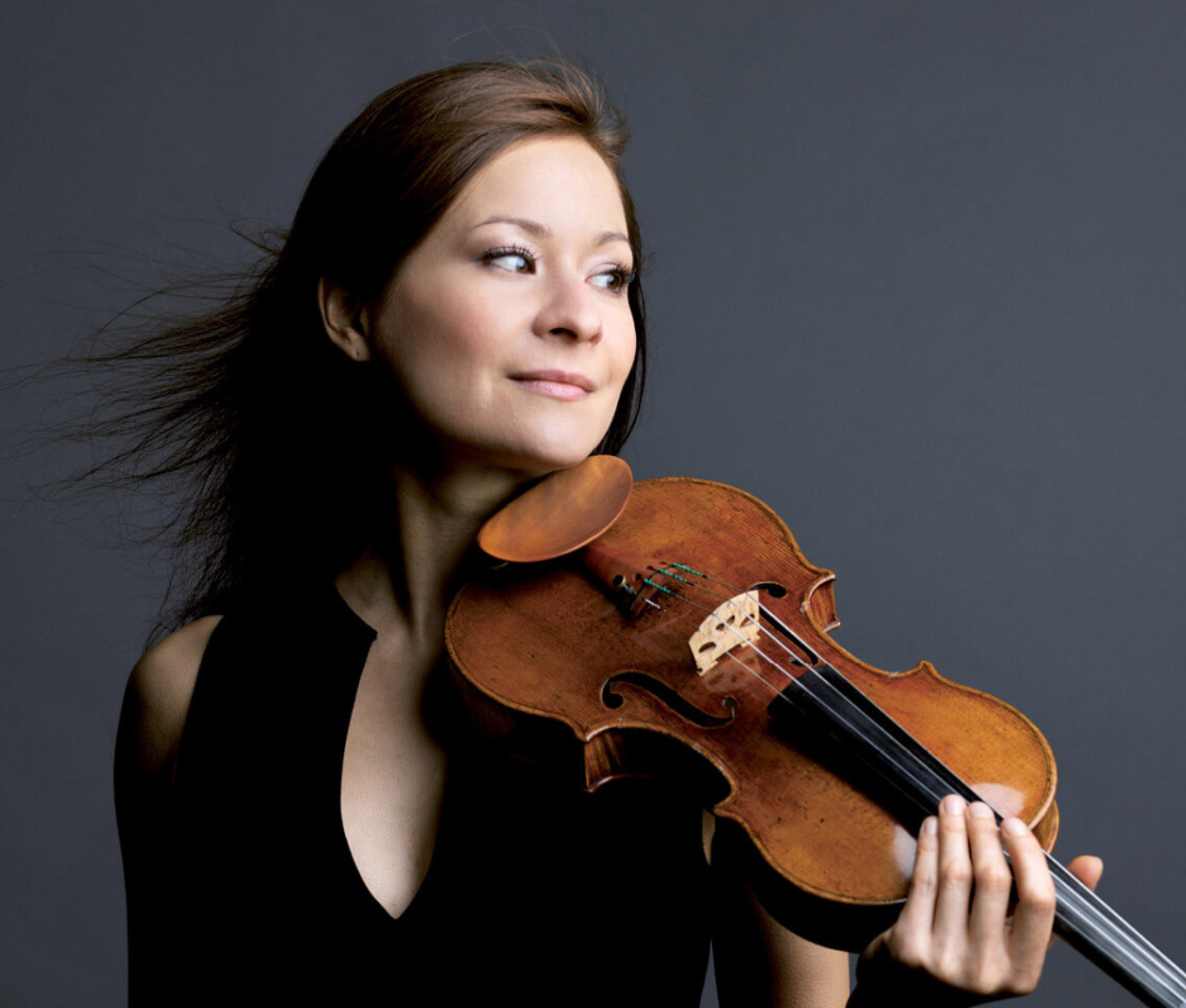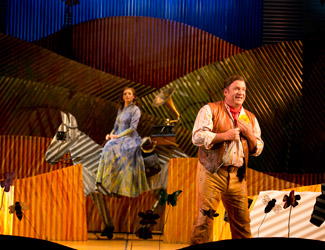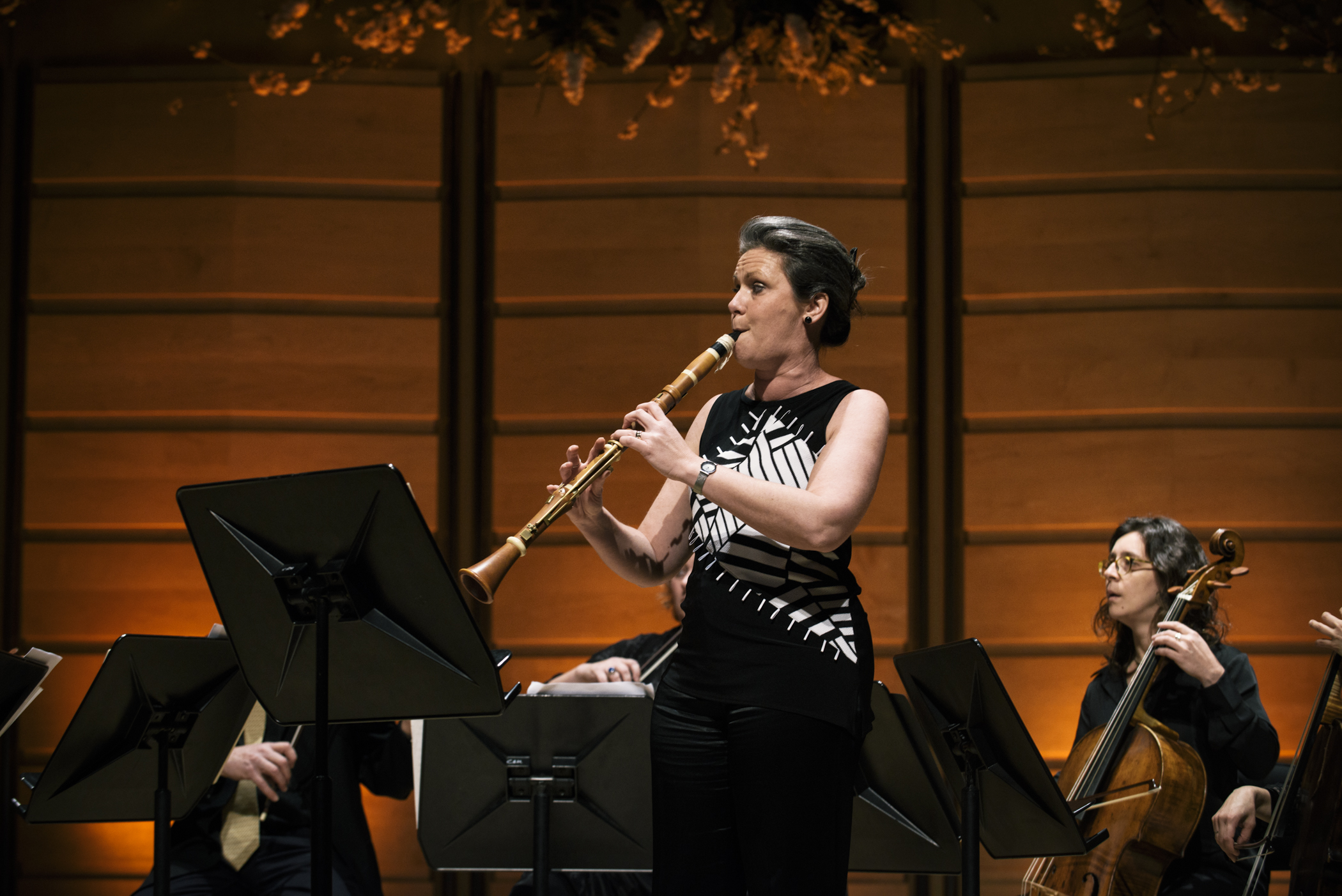Concert Review: Arabella Steinbacher Performs Lentz/ Sydney Symphony Orchestra
Arabella Steinbacher Performs Lentz
Steinbacher/Sydney Symphony Orchestra/Clerici
Concert Hall, Sydney Opera House
28 April, 2023
The Sydney Symphony Orchestra with solo violinist Arabella Steinbacher and conductor Umberto Clerici took music beyond the notes on the stave in a presentation of music by Heinrich Biber, Georges Lentz and Richard Strauss. Themes of war, philosophy, the cosmos, good and evil, dark and light were integrated into these three pieces which also featured ensembles formed in Baroque, contemporary and large Romantic configurations with three different keyboards extra percussion and electric guitar.
Heinrich Ignaz Franz von Biber’s Battalia (1673) is a piece in eight short movements for strings in nine parts and continuo, featuring the delights of the harpsichord. Biber wrote the cycle to depict war, its characters and sentiments, rather than to accompany war. These early attempts by Biber at humour in music, sorrow and descriptive (‘programmatic’) action were well expressed by the ensemble, led by Andrew Haveron. Sounding rather more symphonic than Baroque and a little more reverberant in the spacious Concert Hall of the Sydney Opera House, the gracious opening Presto, was followed by a cheekily dissonant eight-part Allegro which portrays drunken soldiers. Der Mars (March; unrelated to the planet), the fourth movement, featured an impressive duel between violin and double bass, with the violins later sharing the theme around. The violin came to the fore again in a charming interaction with the harpsichord in the Aria. Die Schlact, (The Battle) featured the stile concitato or “agitated style”, developed by Monteverdi to depict the heat of conflict, leading to the final movement, the grieving Lament for the dead and wounded.
It was an entertaining performance of an interesting piece. A variety of special techniques added to the diversion, with rebound pizzicato, foot stamping, varied use of the bow, introducing foil and parchment to emulate the sounds of a fife and drum by the double-basses, pizzicato in the Lamento depicting distant canons. The fading descent of chromatics in the closing Lament left us pondering the futility and devastation of war.
The orchestra was reconfigured, and a variety of percussion instruments appeared on the stage including the hammer, cowbells and thundersheet. The harpsichord gave way to the grand piano and there was even an electric guitar in the large ensemble. This was the world premiere of Georges Lentz’s violin concerto, “…to beam in distant heavens…” commissioned by Steinbacher in 2018, to be played by her. Lentz himself is a violinist with the orchestra and knows intimately the capacity of his instrument and his colleagues, throwing down the gauntlet to both soloist and ensemble, with what seemed to be a very complex piece. Seemingly through composed as a single movement, the piece opens with a thunderous strike from the hammer and the soloist playing a virtuosic passage from off stage. The loop continued as she walked on stage and took over the line with flashy arpeggios, high harmonics and endless trills. Double stops, pizzicato and complex bowing techniques were all called upon as Steinbacher read from an outsized score, presumably because there was little or no opportunity for her to stop to turn a page. She played with beauty of line, supreme control and breathtakingly nimble technique. The orchestration was full-blooded. Different devices, the use of mutes and combinations of instruments creating fresh sounds which faded to support the soloist through extended virtuoso passages. The piece ended as it began with a thunderous interjection from the hammer. World premieres are notoriously difficult to evaluate. There is no score to study, no prior performances to refer to, no literature to read. As a first hearing, with no frame of reference, it is hard to know where we stand in the journey of the music. We can’t press pause and go back to listen to something again. Program notes comprehensively covered the philosophy, the consciousness and emotions behind the music but nought about its structure, overview, tonality, what to listen for, a hint at the themes or special moments. Rather like the mandolin Mahler’s eighth symphony, it was hard to know when the guitar was in play, as with the piano. And were those other projections of sound coming from somewhere in the hall? How were the loops created as the soloist walked on stage?
Ultimately, the success of a piece depends on whether it will be taken up by other orchestras and soloists and whether Steinbacher will reprise the piece as part of her repertoire. The future shall be the judge.
Richard Strauss’ Thus Spoke Zarathustra is an expression of his brush with philosophy in the form of Nietzsche’s eponymous book, and the ancient Persian religion of Zoroastrianism. While Stanley Kubrick immortalised its cinematic and vast opening bars, the rest of the tone poem with its nine movements is less well known. Each movement was named after a chapter of Nietzsche’s book. Thus Spoke Zarathustra is a complex piece musically, with added challenge of communicating the existential, searching restlessness which drives the piece along, with references to religious affirmations – a horn theme which Strauss marked “Credo in unum deum” (a phrase from the Roman Catholic mass meaning “I believe in one God,”) – and hymn-like melodies. The orchestra, with David Drury playing the chamber organ, delivered Strauss’ inimitable harmonies, turns of phrase and cascading walls of sound with aplomb. Peeping through the rich textures were the prankster Till Eulenspiegel, laughter, the freshness of Alpine air, a solo violin waltz exquisitely played by Haveron, and the recurring opening theme played by different sections. Finally, after the lengthy decrescendo there was a difficult but gossamer-light ending as Strauss arrived at his famous question-mark ending with the clash of the B major chord against a dissonant C natural.
The Sydney Symphony Orchestra follows a practice of showcasing one of their players presenting the opening Welcome to Country and explanatory information with varying degrees of success. I am yet to be convinced that this is a good start to the evening. There are numerous other outlets for disseminating information, from the printed and electronic programs to podcasts and pre-concert talks. Exceptional musicians aren’t necessarily confident public speakers. Their comments are invariably read awkwardly from pieces of paper or phones. Perhaps those selected for this honour could be supported with some coaching in public speaking which would put everyone, both musicians and audience, at ease and make for a more inspired start to the evening. As for acknowledging sponsors during the welcoming words – for me, this “innovation” has sullied the concert-going experience. Do we really have to go down this route of overt marketing at a concert in the classical arts? This is a plea to let the musicians do what they do best – and that is to play their music and let the performance speak for itself.
Shamistha de Soysaf or SoundsLikeSydney©
Read our review of the SSO’s recent concert of usic by Elgar and Shostakovich.https://www.soundslikesydney.com.au/reviews/concert-review-elgars-cello-concerto-sydney-symphony-orchestra/31142.html







